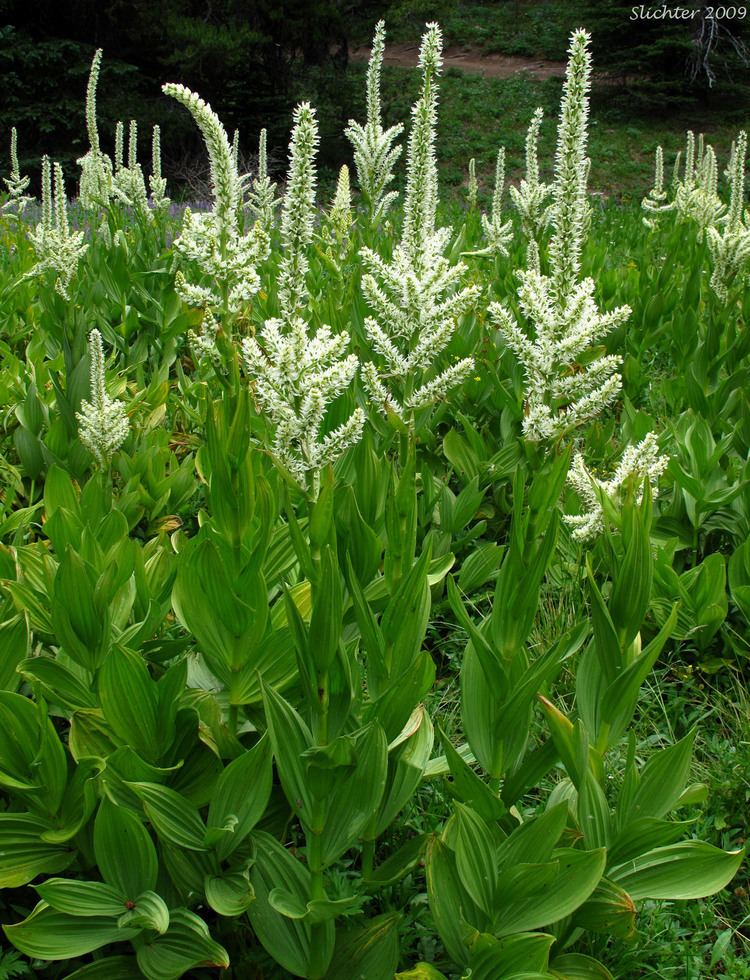Rank Species | Genus Veratrum Higher classification Veratrum | |
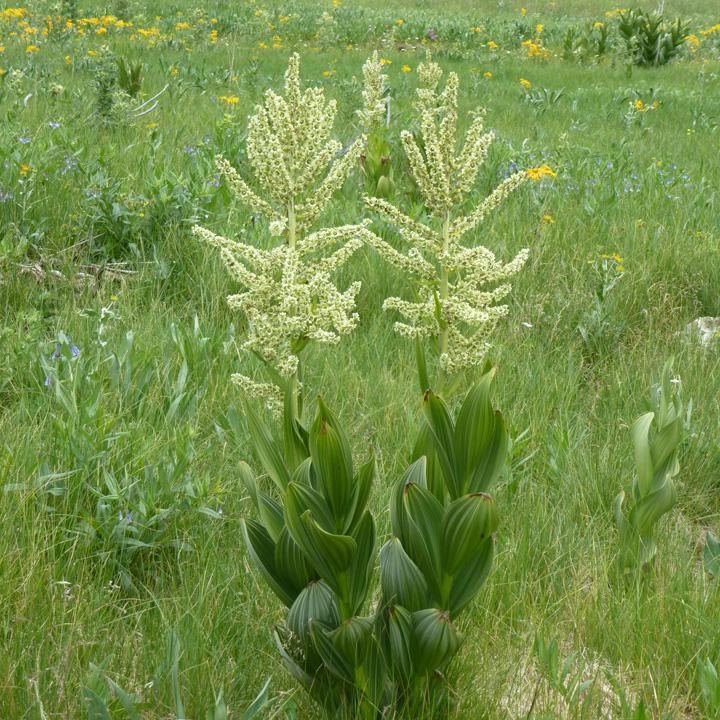 | ||
Similar Veratrum, Veratrum viride, Liliaceae, Amianthium, Melanthiaceae | ||
Veratrum californicum (California corn lily, white or California false hellebore) is a poisonous plant native to mountain meadows at 3500 to 11,000 ft elevation in southwestern North America, the Sierra Nevada and Rocky Mountains, and as far north as Washington State and as far south as Durango. It grows 1 to 2 meters tall, with an erect, unbranched, heavily leafy stem resembling a cornstalk. It prefers quite moist soil, and can cover large areas in dense stands near streams or in wet meadows. Many inch-wide flowers cluster along the often-branched top of the stout stem; they have 6 white tepals, a green center, 6 stamens, and a 3-branched pistil (see image below). The buds are tight green spheres. The heavily veined, bright green leaves can be more than a foot long.
Contents

Veratrum californicum displays mast seeding; populations bloom and seed little in most years, but in occasional years bloom and seed heavily in synchrony.
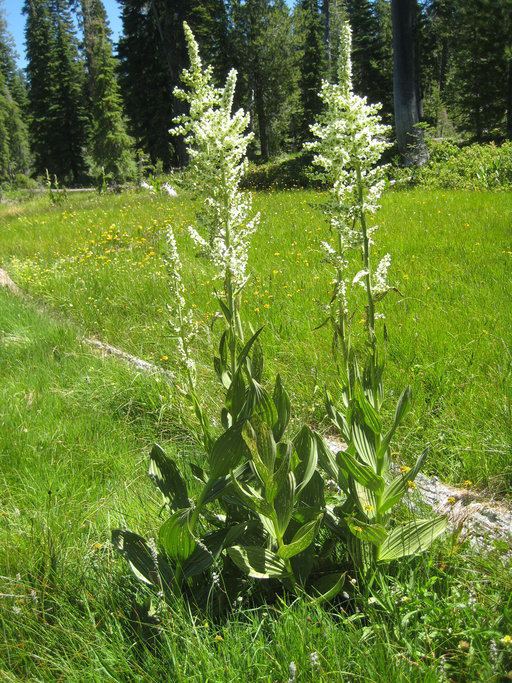
- Veratrum californicum var. californicum – from Washington to Durango
- Veratrum californicum var. caudatum (A.Heller) C.L.Hitchc. – Idaho, Washington, Oregon, N California
Teratogenic effects
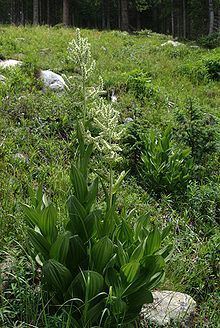
It is a source of jervine and cyclopamine, teratogens which can cause prolonged gestation associated with birth defects such as holoprosencephaly and cyclopia in animals such as sheep, horses, and other mammals that graze upon it. These substances inhibit the hedgehog signaling pathway.
Use as prime material for medical drugs
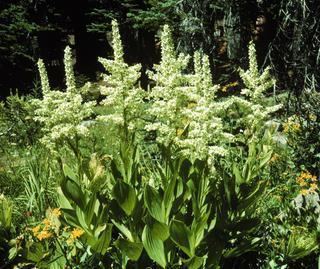
Cyclopamine extracted from V. californicum is being used in anti-cancer experimental drugs. One derivative of it, compound name IPI-926, is currently undergoing clinical trials for the treatment of various types of cancer, including hard-to-treat hematologic malignancies, chondrosarcoma, and pancreatic cancer. IPI-926 is the only compound in development/testing that is not fully synthetic.
